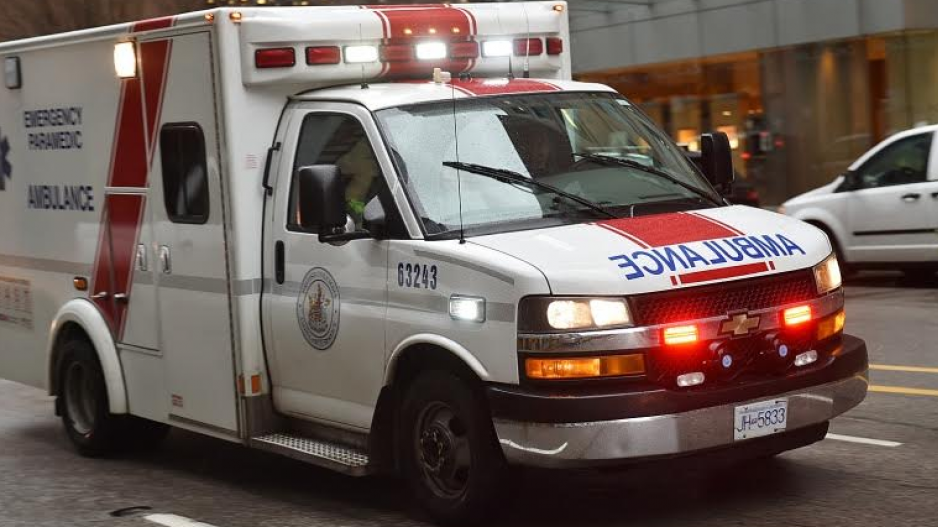Vancouver has long been known as the epicentre for drug overdoses and deaths in B.C., but its drug users were not solely responsible for the record number of overdose calls – 2,706 – responded to by paramedics in July.
Although the province’s most heavily populated city still ranked highest with 739 calls, statistics from B.C. Emergency Health Services show Kelowna and Prince George surpassed 100 calls each in July.
“Vancouver did not drive the high overdose numbers in July,” said Shannon Miller, spokesperson for B.C. Emergency Health Services.
Miller said paramedics responded to 138 calls in Kelowna, including 12 overdoses over a 24-hour period last week, which is four times the Okanagan city’s daily average.
In Prince George, which normally averages 52 overdose calls per month, paramedics responded to 128 in July. That call load compares to 58 in June and 51 in May.
Vancouver has averaged 23 overdose calls per day, so the 739 answered in July are not far off paramedics’ monthly call load in the city. Normally, when paramedics see a spike in overdose calls, it’s because Vancouver has surpassed the daily average.
Surrey, with 244 calls, and Victoria, with 139, rounded out the top three cities for overdose calls, which is not unusual. B.C. Coroners Service data has repeatedly shown those cities along with Vancouver record the most number of overdose deaths.
So far this year, Vancouver’s death toll has reached 178, Surrey is at 92 and Victoria recorded 67. Kelowna (26) and Kamloops (25) rounded out the top five cities for overdose deaths from January to June.
Prince George recorded 16 deaths for the same period. That city’s worst year for overdoses in the last decade occurred in 2018, when 49 people died. Last year, 25 people died of an overdose in Prince George.
Jordan Harris, executive director of the POUNDS Project in Prince George, attributed the increase in calls in July to the closure of one of the city’s two overdose prevention sites, and the increased toxicity of the drug supply.
The POUNDS Project is a non-profit group created in response to the overdose crisis, with the purpose of filling gaps in service for Prince George drug users. POUNDS was operating its own overdose prevention site, but closed it in April because of concerns related to COVID-19.
“Our percentage of people who use drugs that are able to access services right now is way lower than in communities where they have more options,” said Harris, a registered nurse. “So we have more people using in isolation, more people using in the community.”
That reality coupled with the fact the drug supply has become more limited with border closures related to the pandemic has led to more toxic drugs, she said, which is a point Dr. Mark Lysyshyn, the deputy chief medical health officer for Vancouver Coastal Health, made to Glacier Media last month.
Lysyshyn suggested the pandemic’s influence on tighter border controls has led to more manufacturing of fentanyl in Canada by people unfamiliar with setting the potency of the drug.
Coroners’ data shows a higher concentration of fentanyl being found in the illegal drug supply, with 119 of the 170 deaths recorded across the province in May connected to the deadly synthetic opioid.
In mid-July, a provincial overdose alert was issued, warning drug users of severe overdoses related to smoking heroin and stimulants. The alert said there had been a recent increase of carfentanil and benzodiazepines, including Etizolam in the illicit drug supply.
Prior to the pandemic, Harris said, two shots of the overdose-reversing drug naloxone would be enough to treat an overdose victim, and not necessarily require a call to paramedics.
“Now we’re administering four or five shots of naloxone, the person begins to breathe again but they’re staying unconscious because they’re so sedated from these benzodiazepines that are contaminating the drug supply,” Harris said. “So it’s the unusual overdose presentation that people are unsure what to do about. It’s quite terrifying when we’ve been administering naloxone in the community for so long and we’ve seen it work so reliably.”
Year over year, Prince George has seen overdose calls increase, from 481 in 2017 to 626 in 2019; in November 2019, eight overdoses occurred in POUNDS overdose prevention site over a 36-hour period.
Other cities that saw an increased call load for overdoses in July were
Abbotsford (94), Kamloops (89), Nanaimo (71), Langley (64) and Burnaby (53). When added to totals for Vancouver and four others at the top of the list, those 10 cities generated 1,759 of the 2,706 calls in July.
Paramedics normally respond to an average of 2,000 overdose calls per month, but have been breaking records for calls in a single day, as they did June 26 in answering 131 calls — roughly double the daily average.
At the same time, the province has seen a record number of overdose deaths in a month, with 170 in May and 178 in June. The coroners service has yet to release data for July.
On Wednesday, the B.C. government announced it will spend $10.5 million to continue to combat the opioid crisis. That includes $4.5 million for 17 new supervised consumption sites and $3.5 million for 12 new inhalation overdose prevention sites “in communities hit the hardest by the overdose crisis.”
The government didn’t identify the communities.
The money will also be spent to expand drug users’ access to safe prescription alternatives. More registered nurses, psychiatric nurses, social workers and peer support workers will be added to new and existing outreach teams.
@Howellings




